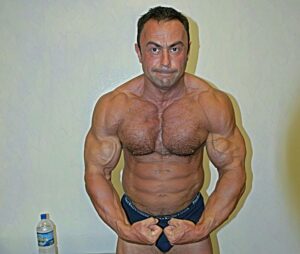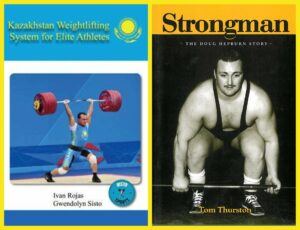
Strength Sensei 101
Managing Multiple Training Sessions
More insights into the training methods of Charles R. Poliquin
Elite athletes are known for putting in long hours in training. It’s not unusual for gymnasts, swimmers, and figure skaters to train for four hours a day, 4-5x a week. Elite athletes often need to do even more, requiring them to break up their workouts into two or more sessions a day. For example, young figure skaters might work on their choreography before school, their jumps after school, and have a ballet or conditioning session after dinner. But the champions of multiple training sessions a day are the elite weightlifters from Kazakhstan.
Ivan Rojas and Gwendolyn Sisto have written extensively on the training methods of the best weightlifters in the world. Their book, Kazakhstan Weightlifting System for Elite Athletes, detailed the training methods of the athletes on their national teams. They would train long but also hard. Very hard.
In one phase of training, Rojas and Sisto said these lifters would train Monday through Saturday, eight times a day. Further, the workouts required them to use weights representing at least 85 percent of their 1-repetition maximum (1RM), and often going to max several times a day. Here is an example of one of their Wednesday workout in a preparatory phase:
Start Time Minutes Exercise Percent of 1-Repetition Maximum
10:00 am 40 Front Squat up to 100%
11:00 am 40 Snatch up to 90%
Noon 40 C&J 90%
4:00 pm 40 Snatch 90%
5:00 pm 40 Front Squat 100%
9:00 pm 40 Snatch 90%
10:00 pm 40 C&J 90%
The rationale for this type of schedule, popularized by Bulgarian weightlifting coach Ivan Abadjiev, is that testosterone levels reach their highest level about 15 minutes after the start of a workout and stay at this level for 30 minutes. Then testosterone levels decrease, decreasing workout intensity. Thus, workouts should not last more than an hour. As the Strength Sensei was fond of saying, if you spend more than an hour in the gym, you’re not training – you’re making friends! Abadjiev, whose athletes often trained five times a day, believed that a least an hour break was necessary to reset the hormonal system before another training session could be performed.
One training system that Charles R. Poliquin liked was the Modified Hepburn Method, a system inspired by Canadian strongman Doug Hepburn. Hepburn would start with relative strength protocols (low reps, heavy weight) followed by functional hypertrophy work (medium reps, medium weight). This would lend itself to twice-a-day training. For example, performing barbell incline presses in the first training session for sets of 2-3 reps, and in the second session performing prone barbell presses for sets of 5 reps. Changing the exercises slightly taps into a different motor unit pool, variety the Strength Sensei found produced superior results.
 Two books mentioned in this article detail advanced training methods for getting strong.
Two books mentioned in this article detail advanced training methods for getting strong.
The Strength Sensei did not recommend multiple workout sessions for beginners, believing it usually took about six months of serious training to develop the conditioning level needed to benefit from this form of training. When you’re ready, the two workouts should be short. He would start with 20 minutes, excluding warm-up, eventually progressing to 40 minutes. For these workouts, he often liked to focus on your weak areas, especially exercises for smaller muscle groups that affect your ability to perform exercises for the larger muscle groups. For example, training the rotator cuff muscles to improve your bench press.
Although the lifters from Kazakhstan and Bulgaria took relatively short breaks between workouts, the Strength Sensei recommended taking four to six hours to allow the nervous system to more completely recover and create a rebound stimulus known as the super compensation effect. However, a break longer than six hours, such as working out in the early morning and late evening, will negate the super competition effect. Further, the Strength Sensei recommended that the first day of a twice-a-day training session phases should be performed on a weekend so you can more completely relax between workouts.
Regarding short-term planning of multiple training sessions, the Strength Sensei would often organize the training into three training cycles. You would train twice a day, 5x a week, in the first two cycles; followed by a deload cycle, training just once a day. Citing research from Finnish and American weightlifters, he said such training resulted in a decrease in testosterone during the first two cycles but would rebound during the unload cycle. To give you an edge in dealing with stress, the Strength Sensei recommended a good antioxidant formula and extra Vitamin C.
If you’re looking to get better in a hurry and have the time to spare, training multiple times per day has a proven track record of success. Budget your time wisely and give it a try! (TSS)
